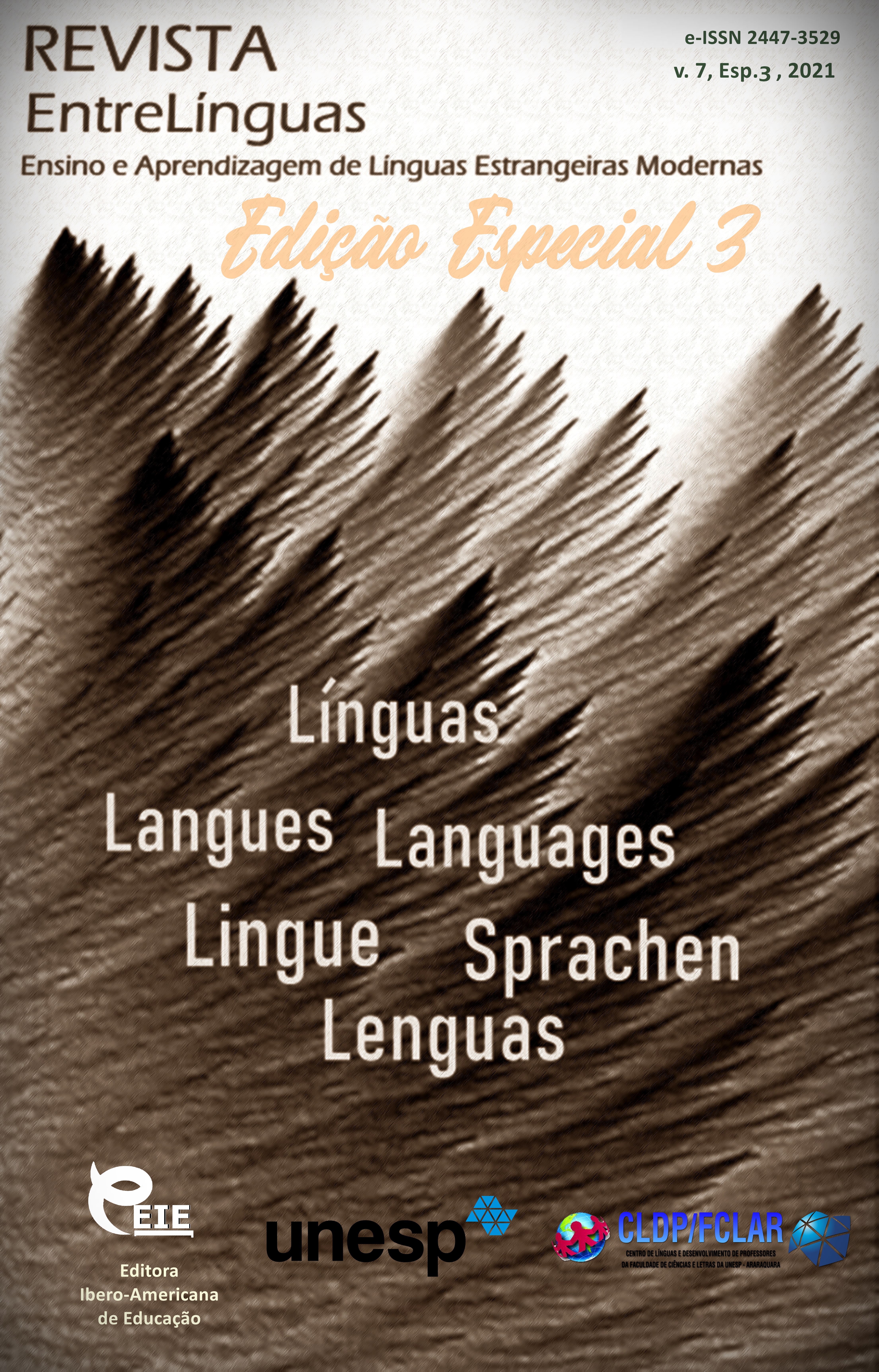Implicit predicativity of nominal sentences in russian and english languages
DOI:
https://doi.org/10.29051/el.v7iesp.3.15708Keywords:
Nominal sentences, One member sentences, Existential sentences, Implicit predicativity, LocalizerAbstract
The article considers nominal sentences in Russian and English languages. This type of sentences have always been seen as one-member sentences, but in the recent decades some researches have appeared claiming that they contain implicit predicativity, that is, they can be considered as two-member sentences at the level of semantics. The authors completely support this view and explore the way how one member sentences express predicativity using limited language means. The authors also provide the classification of nominal sentences with language examples in Russian and English and express the view that nominal sentences have different degrees of implicit predicativity. Special attention is paid to the kinds of nominal sentences with highest implicit predicativity.
Downloads
References
APRESYAN, V. Y.; ORLOV, A. V. Semanticheskiye tipy implicatur i usloviya ih vozniknoveniya. 2020. Available: http://www.dialog-21.ru/media/4583/apresjanvjuplusorlovav-012.pdf. Access: 10 Dec. 2020.
BENOTTI, L.; BLACKBURN, P. Context and implicature. 2014. Available: https://www.researchgate.net/publication/312676945_Context_and_Implicature. Access: 10 Dec. 2020.
CAMBRIDGE Advanced Learner's Dictionary. Available: https://dictionary.cambridge.org/dictionary/english/implicit. Access: 10 Dec. 2020.
FILLMOR, C. J. Frame semantics. SICOL, 1981.
GARAEVA, A. K. et al. Awareness of historical background as one of the factors of better language acquisition. International Journal of English Language and Literature Studies, v. 7, n. 1, p. 15-21, 2018.
GRICE, P. Logic and conversation. In: COLE, P.; MORGAN, J. L. (Eds.). Syntax and semantics. New York: Academic Press, 1975. v. 3, p. 41-58.
GRICE, P. Studies in the way of words. Harvard University Press, 1989.
JESPERSEN, O. The philosophy of grammar. Routledge, 2006
KASHICHKIN, A. V. Implitzitnost v kontexte perevoda: dis. ... kand. filol. nauk: 10.02.20. Moscow, 2013.
KOLSHANSKY, Т. V. Kontextnaya semantika. Moscow: Nauka, 1980.
KOMISSAROV, V. N. Sovremennoe prrevodovedeniye. Мoscow: EТС, 2002.
KOZLOVA, Y. A.; KADYROVA, A. A.; SAKHIBULLINA, K. A. Problems of testing application in foreign language learning control. Humanities and Social Sciences Reviews, v. 7, n. 6, p. 53-59, 2019.
MAUGHAM, W. S. Narrow corner. 2020. Available: https://gutenberg.ca/ebooks/maughamws-narrowcorner/maughamws-narrowcorner-00-h.html. Access: 10 Dec. 2020.
MAUGHAM, W. S. The painted veil. 2019. Available: https://www.reads2019.com/painted-veil. Access: 10 Dec. 2020.
PADUCHEVA, E. V. Viskazivaniye i ego sootnesennost’ s deistvitel’nostyu. Moscow: LKI, 2010.
POCHEPTSOV, G. G. Kommunikativniye aspekti semantiki. Kiev: Vishcha Shkola, 1987.
SALINGER, J. D. The catcher in the rye. 2020. Available: http://masterrussian.net/f49/catcher-rye-j-d-salinger-english-russian-12212/. Access: 10 Dec. 2020.
SHELDELS, E. I. Implicitnost v grammatike. In: SHENDELS, E. I. Voprosy romano-germanskoy philologii. Sintaksicheskaya semantika: sbornik nauchnikh trudov MGPIIY imeni M.Toreza. Moscow, 1977. p. 37-45.
SITDIKOVA, F. B.; EREMEYEVA, G. R.; VALIEVA, G. F. Implicit negation in dialogue discourse. Journal of History Culture and Art Research, v. 6, n. 6, p. 175-181, 2017.
SITDIKOVA, F. B.; KHISAMOVA, V. N.; MUTIGULLINA, Z. A. Implicit negation in tatar phraseology. Journal of Sociology and Social Anthropology, v. 10, n. 4, p. 175-179, 2019.
SPERBER, D.; WILSON, D. Relevance. Inference and Implicature. In: SPERBER, D.; WILSON, D. Meaning and interpretation. Oxford, 1986. p. 43-75.
THOMAS, J. Meaning in interaction: an introduction to pragmatics. Longman, 1995
YUS, F. Misunderstandings and explicit/implicit communication. Available: https://benjamins.com/catalog/prag.9.4.01yus/fulltext/prag.9.4.01yus.pdf. Access: 10 Dec. 2020.
Published
How to Cite
Issue
Section
License

This work is licensed under a Creative Commons Attribution-NonCommercial-ShareAlike 4.0 International License.
Os manuscritos aceitos e publicados são de propriedade da Revista EntreLínguas. Os artigos publicados e as referências citadas na Revista EntreLínguas são de inteira responsabilidade de seus autores.
Transferência de direitos autorais – autorização para publicação
Caso o artigo submetido seja aprovado para publicação, já fica acordado que o(s) autor(es) autoriza(m) a UNESP a reproduzi-lo e publicá-lo na EntreLínguas, entendendo-se os termos “reprodução” e “publicação” conforme definição respectivamente dos incisos VI e I do artigo 5° da Lei 9610/98. O artigo poderá ser acessado pela rede mundial de computadores (Internet), sendo permitidas, a título gratuito, a consulta e a reprodução de exemplar do artigo para uso próprio de quem a consulta, desde que haja a citação ao texto consultado. Essa autorização de publicação 328 EntreLínguas, Araraquara, v. 1, n .2, p. 323-328, jul./dez. 2015 não tem limitação de tempo, ficando a UNESP responsável pela manutenção da identificação do(s) autor(es) do artigo. Os artigos publicados e as referências citadas na Revista EntreLínguas são de inteira responsabilidade de seus autores.











